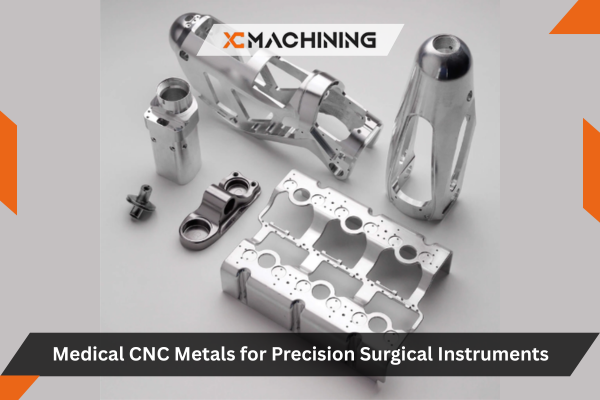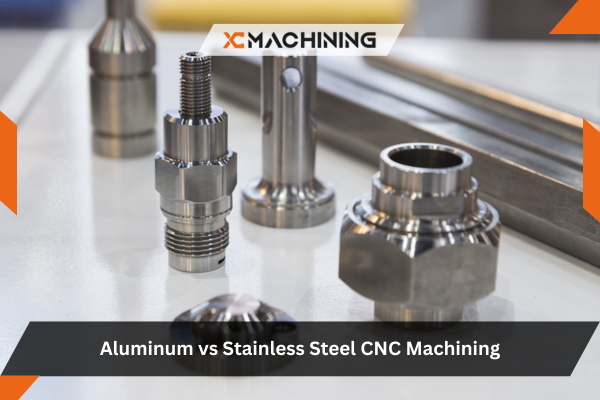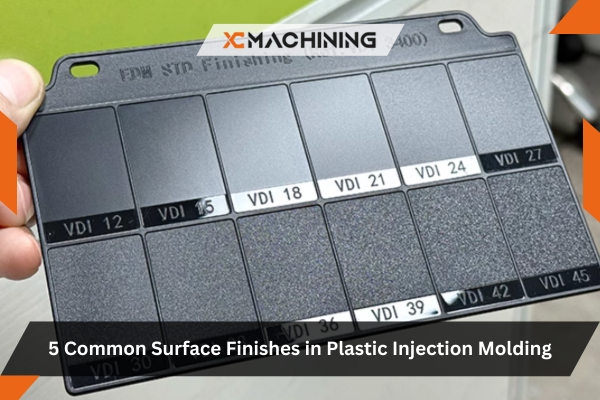The aerospace industry has embraced 3D printing technology with considerable enthusiasm over the past decade. Major manufacturers like Boeing, Airbus, and GE Aviation have invested heavily in additive manufacturing, producing everything from cabin fixtures to critical engine components. While 3D printing in aircraft manufacturing offers compelling advantages like weight reduction and design flexibility, the technology faces significant challenges that prevent its universal adoption. Understanding these disadvantages provides a realistic perspective on where 3D printing fits within aerospace manufacturing and where traditional methods still reign supreme.
Table des matières
Certification et obstacles réglementaires
The most formidable challenge facing 3D printing in the aerospace industry involves certification and regulatory approval. Aviation operates under some of the world’s strictest safety standards, and every component installed on an aircraft must meet rigorous certification requirements established by authorities like the Federal Aviation Administration (FAA) and European Union Aviation Safety Agency (EASA).
The Certification Process Complexity
Traditional manufacturing processes like forging, casting, and machining have decades of established data supporting their reliability and performance characteristics. Regulatory bodies understand these processes thoroughly and have streamlined certification procedures. In contrast, 3D printing aerospace components requires building entirely new certification frameworks.
Each additive manufacturing process—whether selective laser melting, electron beam melting, or direct metal laser sintering—behaves differently. Variables that don’t exist in conventional manufacturing complicate certification:
- Build orientation effects: The same part printed in different orientations can have vastly different mechanical properties
- Powder quality variations: Metal powder characteristics significantly impact final part quality
- Machine-specific differences: Parts produced on different 3D printers may not be identical even using the same design file
- Post-processing variables: Heat treatment, surface finishing, and stress relief procedures add complexity
Aviation regulators require extensive testing to validate that 3D printing aircraft parts meet airworthiness standards. This testing regime includes mechanical property validation, fatigue testing, fracture toughness analysis, and long-term reliability studies. The cost and time required for this certification process can exceed the savings gained from additive manufacturing.
Documentation and Traceability Requirements
3D printing for aerospace demands meticulous documentation of every production parameter. Manufacturers must record:
- Specific machine identification and calibration status
- Powder lot numbers and material certificates
- Build parameters including laser power, scan speed, and layer thickness
- Environmental conditions during production
- Post-processing procedures and inspection results
This documentation burden exceeds what traditional manufacturing requires, adding administrative costs and complexity to 3D printing operations.

Material Limitations and Property Concerns
Despite advances in materials science, 3D printing in the aerospace industry faces significant material-related challenges that limit its application.
Restricted Material Options
Traditional aerospace manufacturing works with a well-established palette of materials proven over decades of service. While 3D printing technology has expanded its material capabilities, the approved materials for aerospace applications remain limited compared to conventional manufacturing options.
Common aerospace materials and their 3D printing challenges:
Many high-performance alloys critical to aerospace applications cannot be reliably 3D printed with current technology. Materials that work well in traditional manufacturing may exhibit poor printability, suffering from cracking, porosity, or inconsistent mechanical properties when produced through additive manufacturing.
Anisotropic Properties
3D printing aircraft parts layer by layer creates inherent anisotropy—mechanical properties vary depending on the direction of measurement. Parts built vertically may have different strength characteristics than those built horizontally. This directional dependence complicates design and requires careful consideration of load paths and stress directions.
Traditional aerospace materials typically exhibit isotropic properties—they perform consistently regardless of orientation. This predictability simplifies design calculations and provides engineers with greater confidence in structural analysis. The anisotropic nature of 3D printed parts requires more complex analysis and often necessitates conservative design approaches that negate some weight-saving benefits.
Porosity and Internal Defects
Even with optimized parameters, 3D printing aerospace components may contain microscopic porosity or inclusions that compromise structural integrity. While non-destructive testing can detect many defects, some microscopic flaws may escape detection yet grow into critical failures under cyclic loading.
Aircraft components experience extreme stress cycles, temperature variations, and environmental exposure throughout their service life. Hidden defects in 3D printed parts pose greater risks than similar imperfections in wrought or forged materials because additive manufacturing’s layer-by-layer construction creates unique failure modes.
Economic Considerations Beyond Initial Hype
The economics of 3D printing aircraft parts proves more complex than early adopters anticipated. While the technology eliminates tooling costs for low-volume production, several factors limit its cost-effectiveness.
High Equipment and Operational Costs
Industrial-grade metal 3D printers suitable for aerospace applications represent substantial capital investments, typically ranging from $500,000 to over $1 million per machine. These costs dwarf conventional machine tools, and the specialized infrastructure required compounds the expense:
- Controlled atmosphere chambers for reactive materials
- Powder handling and recycling systems
- Advanced post-processing equipment
- Sophisticated quality control and inspection systems
- Climate-controlled production environments
Operating costs also run high. Metal powder materials cost significantly more than bulk metal stock used in traditional manufacturing. A kilogram of aerospace-grade titanium powder for 3D printing can cost 5-10 times more than equivalent bar stock.
Low Production Rates
3D printing in the aerospace industry suffers from relatively slow build speeds. Producing a single complex part may take hours or even days, depending on size and complexity. In contrast, once tooling exists, conventional manufacturing processes like casting or machining can produce parts much more rapidly.
Comparative production rates for aerospace components:
- 3D printed titanium bracket: 12-24 hours per part
- Machined titanium bracket: 2-4 hours per part (after initial tooling)
- Cast aluminum housing: 30 minutes per part (in volume production)
- 3D printed aluminum housing: 8-16 hours per part
For high-volume production runs, traditional manufacturing methods remain far more economical. 3D printing finds its sweet spot in low-volume production, spare parts, and highly complex geometries that would be impossible or prohibitively expensive to produce conventionally.
Post-Processing Requirements
3D printing aerospace parts rarely produces flight-ready components directly from the printer. Extensive post-processing typically includes:
- Support structure removal
- Heat treatment for stress relief and property optimization
- Surface finishing through machining or polishing
- Inspection and non-destructive testing
- Final dimensional verification
These additional steps consume time and resources, often requiring specialized equipment and skilled technicians. The post-processing burden can equal or exceed the actual printing time, significantly impacting total production costs.
Quality Control and Consistency Challenges
Ensuring consistent quality across production runs remains a persistent challenge for 3D printing aircraft components.
Process Sensitivity and Variability
Additive manufacturing processes exhibit sensitivity to numerous variables that traditional manufacturing better tolerates. Small variations in ambient humidity, powder moisture content, machine calibration, or operator technique can affect final part quality. This sensitivity requires constant vigilance and strict process control.
Batch-to-batch consistency becomes challenging when producing multiple identical parts over time. A part printed today may not perfectly match one printed six months ago, even using identical parameters, due to subtle machine wear, powder aging, or environmental differences.
Inspection Limitations
Inspecting 3D printed parts presents unique challenges. Traditional non-destructive testing methods like X-ray radiography or ultrasonic inspection may not detect all defect types specific to additive manufacturing. Lack-of-fusion defects, partially melted powder, or microstructural anomalies require specialized inspection techniques not universally available.
The complex internal geometries possible with Impression 3D—one of its key advantages—also complicate inspection. Internal channels, lattice structures, and conformal cooling passages may be impossible to adequately inspect with current technology, creating certification concerns.
Design and Engineering Constraints
While 3D printing offers design freedom in many respects, it also imposes unique constraints that aerospace engineers must navigate.
Size Limitations
Current industrial 3D printers have limited build volumes, typically ranging from 250mm to 800mm in any dimension. Large aerospace structures require assembly from multiple printed sections, reintroducing joints and fasteners that increase weight and complexity. Traditional manufacturing can produce larger monolithic components without these compromises.
Surface Finish Challenges
3D printed parts typically exhibit rough surface finishes due to the layer-by-layer construction process. Aerospace applications often demand smooth surfaces for aerodynamic performance, fatigue resistance, or aesthetic reasons. Achieving acceptable surface quality requires extensive post-processing through machining, polishing, or chemical treatments.
The stair-stepping effect inherent to layer-based manufacturing creates stress concentrations that can initiate fatigue cracks. Critical aerospace components may require complete surface machining, eliminating the near-net-shape advantage that makes 3D printing attractive.
Thermal and Residual Stress Issues
The rapid heating and cooling cycles during 3D printing induce residual stresses within parts. These internal stresses can cause warping during printing or distortion during post-processing heat treatment. Managing residual stress requires careful build parameter optimization and often mandates stress-relief procedures that add time and cost.

Intellectual Property and Security Concerns
The digital nature of 3D printing introduces cybersecurity vulnerabilities that don’t exist in traditional aerospace manufacturing.
Design File Security
3D printing aircraft parts from digital files creates risks of unauthorized copying, modification, or distribution. A stolen or compromised design file enables production of counterfeit parts that could enter the aerospace supply chain without proper certification or quality control.
Protecting intellectual property becomes more challenging when designs exist as easily copied digital files rather than physical tooling that’s difficult to replicate.
Supply Chain Vulnerability
The ease of 3D printing raises concerns about unauthorized manufacturers producing aerospace components without proper oversight. Counterfeit parts represent serious safety risks, and the distributed nature of additive manufacturing complicates supply chain monitoring and authentication.
Workforce and Knowledge Gaps
Implementing 3D printing in the aerospace industry requires specialized expertise that’s currently in short supply.
Critical skill gaps include:
- Design engineers trained in design-for-additive-manufacturing principles
- Materials scientists understanding additive manufacturing metallurgy
- Quality engineers familiar with additive-specific inspection techniques
- Production technicians skilled in machine operation and troubleshooting
- Regulatory specialists knowledgeable about additive manufacturing certification
Developing this workforce requires significant training investments and time. The shortage of qualified personnel limits how quickly aerospace companies can scale their additive manufacturing operations.
Long-Term Durability Unknowns
Aircraft operate for decades, accumulating thousands of flight hours under demanding conditions. While accelerated testing provides some confidence in 3D printed component longevity, these parts lack the extensive service history that validates traditionally manufactured aerospace components.
Questions remain about how 3D printed parts will perform after 20-30 years of service exposure to:
- Repeated thermal cycling
- Vibration and mechanical stress
- Environmental exposure and corrosion
- Aging and microstructural evolution
This uncertainty makes aerospace companies conservative about using 3D printing for critical structural or safety-related components where long-term reliability is paramount.
Conclusion
3D printing in aircraft manufacturing represents a powerful tool with specific applications where it excels—low-volume production, complex geometries, rapid prototyping, and obsolete part replacement. However, the disadvantages outlined here explain why additive manufacturing hasn’t revolutionized aerospace production as some early predictions suggested.
Certification challenges, material limitations, economic considerations, quality control difficulties, and various technical constraints prevent 3D printing from replacing traditional manufacturing methods for many aerospace applications. Understanding these limitations helps industry professionals make informed decisions about when 3D printing aircraft parts makes sense and when conventional manufacturing remains the better choice.
As technology matures, materials improve, and regulatory frameworks evolve, some of these disadvantages will diminish. For now, 3D printing in the aerospace industry serves as a complementary technology rather than a wholesale replacement for established manufacturing processes that have proven their reliability over decades of aviation history.





